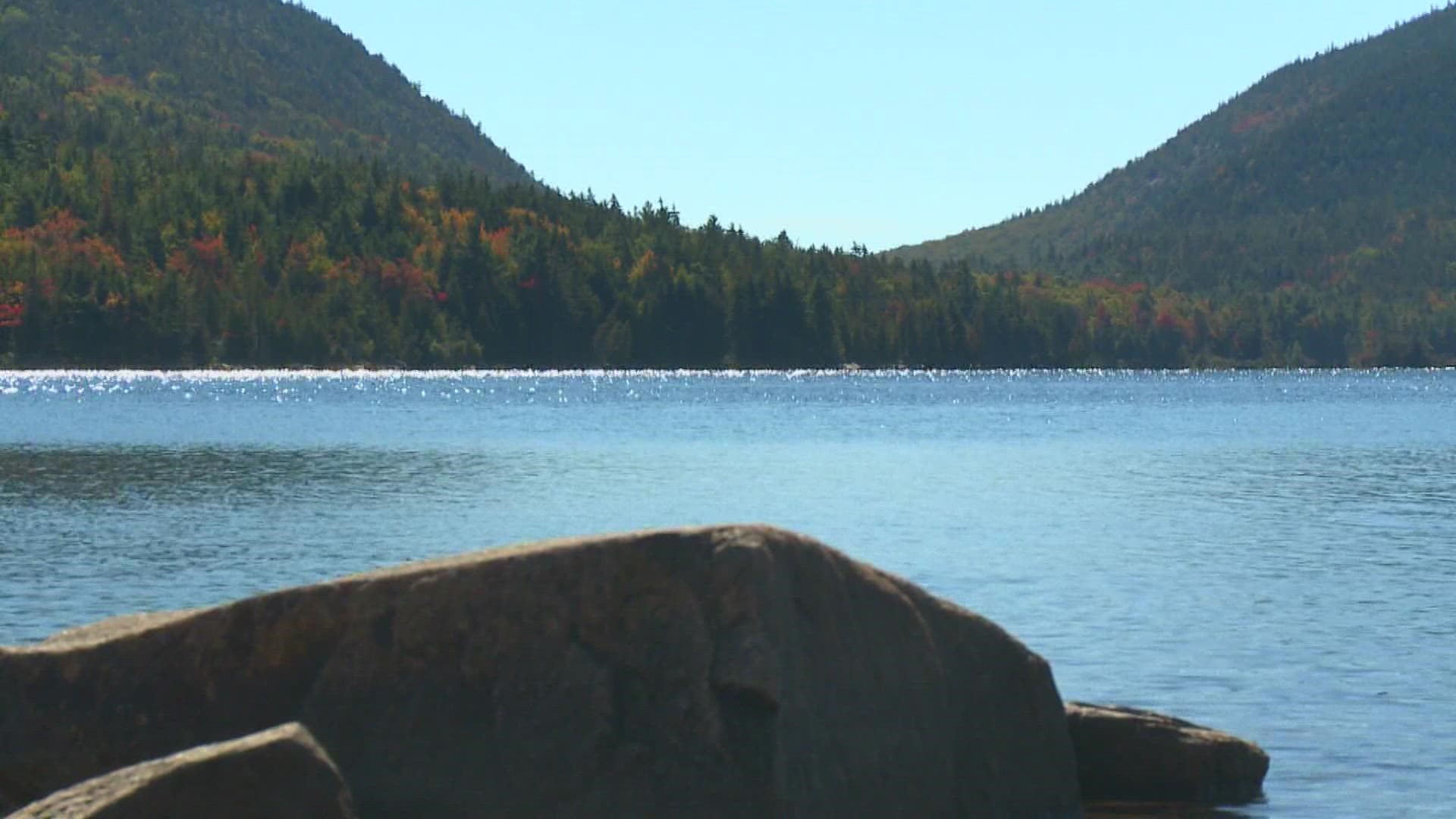PORTLAND, Maine — If you’ve lived here for any appreciable amount of time, you’ve probably heard Maine referred to as the “tailpipe of the nation.” Prevailing winds carry pollutants up from the Midwest and the rest of New England, periodically resulting in smoggy, hazy days, particularly in the hot summer months. On the East Coast, that haze comes from power plants, industrial boilers, industrial processes, and emissions from cars and trucks.
“Even if we had really great emission standards in Maine, the way that the air currents work in the country, we’re getting so much from the Midwest anyway,” Madeleine Fenderson, an organizer with Environment Maine Research and Policy Center, told Maine Public in 2018. “In order for us to really see the results in our air quality it needs to be a federal mandate.”
Much of that smog settles in some of our most treasured natural places, where residents and visitors alike come to enjoy the dazzling scenery and abundant wildlife. In 1999, in an effort to preserve those views, the Environmental Protection Agency initiated a major effort to improve air quality in national parks and wilderness areas around the country, calling it the Regional Haze Rule.
This week, the EPA sent notices to Maine and 14 other states that missed a deadline to under that rule submit plans to reduce air pollution in Acadia National Park, Roosevelt Campobello International Park, and Moosehorn Wilderness Area.
The rule requires each state to submit a State Implementation Plan (SIP) every 10-years and a 5-year Progress Report after each SIP. Maine submitted its most recent progress report to the EPA in 2016; an updated SIP was due in July of 2021. Along with Maine, Alabama, Illinois, Iowa, Kentucky, Louisiana, Minnesota, Mississippi, Missouri, Nebraska, New Mexico, Pennsylvania, Rhode Island, Vermont, and Virginia also missed that deadline and another 6-month extended deadline that followed.
The notices issued to states are also the subject of a lawsuit filed by four environmental organizations, including the Sierra Club. The lawsuit argues that, by not issuing notices of violations to states that had missed the deadline, the EPA was neglecting to enforce its own rule. States issued violation notices now have two years to either submit a late plan or accept an EPA-written plan.
“It’s up to EPA, the agency charged with protecting human health and the environment, to hold these states accountable to the law and ensure our national parks, rangers, visitors, wildlife and surrounding communities have clear skies and clean air to breathe,” Stephanie Kodish, senior director and counsel for National Parks Conservation Association’s Clean Air and Climate programs, said in a statement.
The Monitor was unable to reach the Maine Department of Environmental Protection by the time this newsletter was published Friday morning. A draft of a comprehensive revision of the state’s regional haze plan dated March 1, 2021, which indicates that air quality is improving and is expected to continue to improve over the next decades.
Air pollution may not always be the most visible of environmental hazards in Maine, but it still takes a toll on the health of all of us. The state has the third highest asthma rate in the nation, despite our small cities and hundreds of miles of wilderness. Thirty years of air quality monitoring have shown that Acadia receives some of the highest levels of pollution in the northeast, according to park literature, and pollution remains “one of the most important environmental issues facing the park.”
This story was originally published by The Maine Monitor. The Maine Monitor is a local journalism product published by The Maine Center for Public Interest Reporting, a nonpartisan and nonprofit civic news organization.

